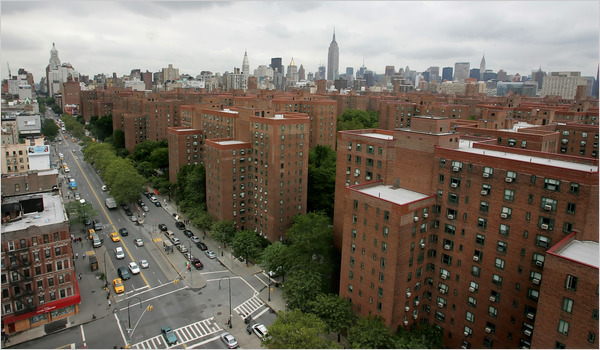Ever since the Metropolitan Council on Housing’s June report on the tax breaks afforded to wealthy property developers, the market has come under mounting criticism. Affordable housing advocates claim that the 421-a tax exemption program designed to drive up residential development is being exploited by those who need it least.
For years, critics of the program have worked hard to highlight the inefficiency of the 421-a program. However, with an increasing number of billionaires now accessing the program, they’re upping the ante and calling for reforms.
To give you a brief rundown, the 421-a tax exemption program was established in the 1970s to encourage residential development. It provides tax breaks to developers who use underdeveloped or underused land to build new homes. Prime realty locations fall into what’s called the “exclusionary zone,” where they are required to fulfill an additional criterion in order to claim the 421-a tax exemption: 80/20 housing.
80/20 housing mandates developers to set aside 20 percent of the homes they build to affordable housing. So, for a building like 505 West 37th Street to secure drastically reduced tax rates, developers had to commit 166 of its 835 units to low-income families and individuals. These affordable units are awarded through a lottery system to tenants earning less than 50 percent of the Area Median Income (AMI)—roughly $30,000 for an individual and $40,000 for a family of four.
In return for these affordable houses, developers save their building from being taxed at market-rate value for a 10–25 year phase-out period. Take Extell’s One57, arguably the most controversial example of the 421-a tax exemption in the city’s history. Residents of the luxury skyscraper will receive a 94 percent tax break for 10 years following completion of the building. This means the owner of that plush $90-million penthouse will enjoy an astonishingly low tax bill of just $18,000 until 2023. This is in stark comparison to the $550,000 in taxes the penthouse would ordinarily rack up were it not for the 421-a exemption.Like Manhattan’s many other luxury condominiums on the 421-a program, the lost tax revenue for One57 and its 92 units will add up to millions of dollars each year. At this stage, it’s unknown exactly what the damage will be. With other, more modest projects, like 505 West 37th Street and the Mercedes House Apartments, which are skipping out on approximately $10 million in unpaid taxes each year, we can assume that the collective tax break for One57 will be record breaking.
In the past year alone, the 421-a program resulted in well over $1 billion in uncollected tax revenue, a figure that will only increase with the inflation of housing prices. This raises the obvious question: Are the few houses created through tax exemptions worth the massive losses in unpaid taxes? Critics don’t think so. They see the program as inefficient and believe the billions of dollars lost each year would be much better spent on initiatives designed to create permanently affordable housing in areas where there is a real need.
Another argument against the 421-a program is its dwindling relevance in today’s market. The program was established in 1971 when residential development was at an all-time low and people were fleeing the city for the lily-white suburbs. It was initially set up to encourage growth in underdeveloped areas, but it appears the biggest beneficiaries of the program nowadays are multimillion-dollar Midtown projects.
Critics also point to the fact that few other American cities rely on tax breaks to spur affordable housing growth, and yet they manage to get by just fine. In fact, over 60 percent of New York’s residential development in the past 20 years was successfully completed without the help of the 421-a tax exemption. This has many asking: If those projects managed without the tax break, why can’t they all?
It comes as no surprise that developers refute this. They stand firmly by the belief that without tax exemptions, they couldn’t afford to develop housing projects. But with penthouses in these tax-exempt buildings selling for almost $100 million a pop, the “too poor” argument struggles to hold up.
While many call for a complete scrapping of the 421-a program, some nongovernment agencies have suggested several reforms to make it more equitable. These include increasing the 80/20 ratio to 60/40 and blocking developments in prime locations from accessing the program altogether.
One thing is for sure, as of January 2013 the 421-a program will face an even greater threat: a new mayor hell bent on solving New York’s affordable housing crisis. Prior to the mayoral election, Bill De Blasio expressed a desire to see reforms to the 421-a program. He told The Real Deal: “We need to restrict the granting of tax incentives to only those projects which would not have happened absent a tax break—or which, because of the tax break, provide important public benefits…I do not believe the tax benefits for One57 or 30 Park Place meet these criteria.” Having collected hefty campaign donations from kingpin property developers like Extell and the Durst Organization, it will be interesting to see how much and how soon the new mayor flexes his muscles on this matter when he takes office.

